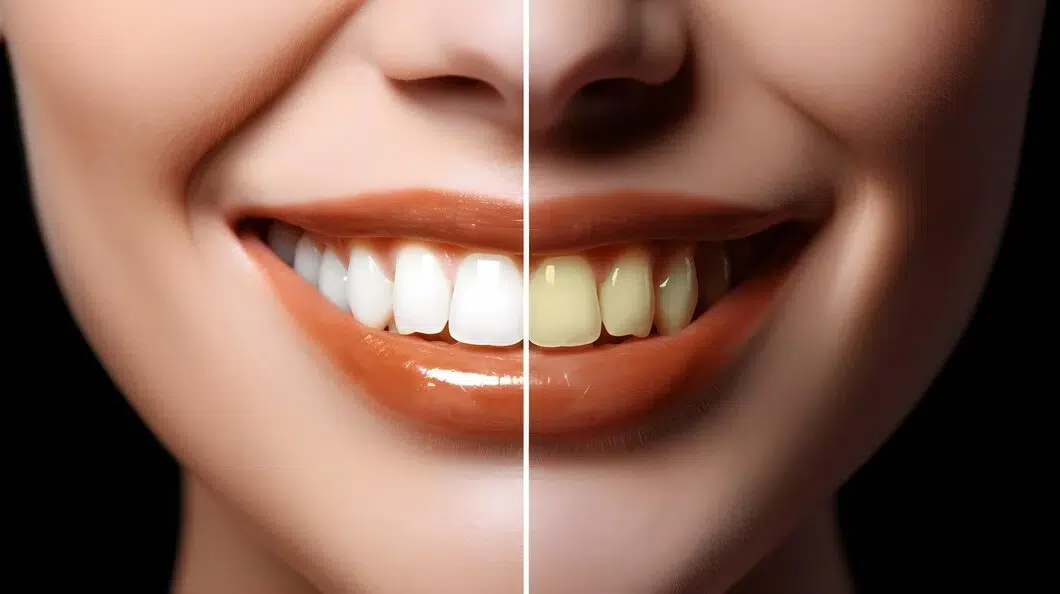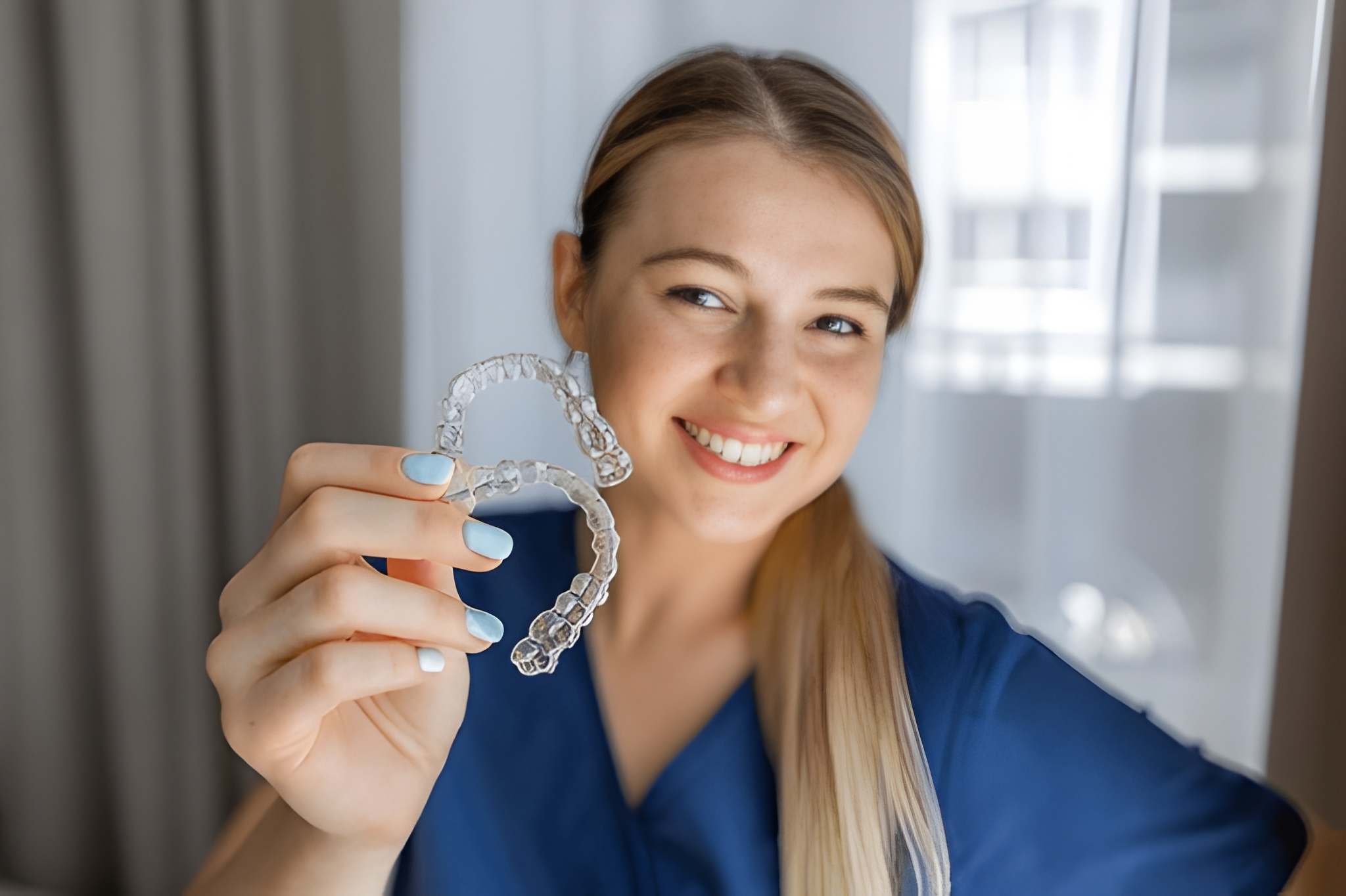Composite bonding is a popular dental procedure for fixing various cosmetic issues, but many wonder about its longevity and permanence. In this article, we delve into the question: Is composite bonding permanent?
Understanding Composite Bonding
What is Composite Bonding?
Composite bonding, also known as dental bonding, is a cosmetic dental procedure used to improve the appearance of teeth by repairing chips, cracks, gaps, and discoloration. It involves the application of a tooth-colored composite resin material to the affected teeth, which is then sculpted, shaped, and polished to blend seamlessly with the natural teeth.
How is Composite Bonding Done?
The process of composite bonding typically begins with the dentist selecting a shade of composite resin that matches the patient’s natural tooth color. The surface of the tooth is then roughened and a conditioning liquid is applied to help the bonding material adhere to the tooth. Next, the composite resin is carefully applied, molded into the desired shape, and hardened using a special curing light. Finally, the bonded material is polished to achieve a smooth and natural-looking finish.
Is Composite Bonding Permanent: Durability of Composite Bonding
Composite bonding is renowned for its durability, but its longevity is influenced by several factors. Understanding these factors is crucial for assessing the lifespan of composite bonding and ensuring optimal results for patients.
Factors Affecting Durability
- Oral Hygiene: Proper oral hygiene practices, including regular brushing, flossing, and dental check-ups, play a significant role in maintaining the durability of composite bonding. Poor oral hygiene can lead to plaque buildup and bacterial growth, which may weaken the bonding material over time.
- Bite Force: Excessive biting forces, such as teeth grinding (bruxism) or chewing on hard objects, can place stress on the bonded teeth and compromise the integrity of the composite material. Patients with bruxism may require additional protective measures, such as wearing a nightguard, to prevent damage to the bonded teeth.
- Dietary Habits: Consumption of acidic or sugary foods and beverages can erode the tooth enamel and weaken the bonding material. Patients are advised to limit their intake of acidic drinks, such as citrus juices and carbonated sodas, and to avoid chewing on hard candies or ice cubes to preserve the durability of composite bonding.
- Smoking and Tobacco Use: Tobacco products, including cigarettes and chewing tobacco, can stain the composite material and increase the risk of bonding failure. Smoking also impairs blood flow to the gums, which can affect the long-term health of the bonded teeth and surrounding tissues.
Lifespan of Composite Bonding
The lifespan of composite bonding can vary depending on the aforementioned factors, as well as individual patient characteristics and the skill of the dentist. On average, composite bonding can last anywhere from five to ten years with proper care and maintenance.
Regular dental check-ups are essential for monitoring the condition of the bonded teeth and addressing any issues that may arise. In some cases, touch-up treatments or repairs may be necessary to maintain the integrity and aesthetics of the bonded teeth over time.
By understanding the factors affecting the durability of composite bonding and adopting appropriate preventive measures, patients can maximize the lifespan of their bonded teeth and enjoy the benefits of a confident and radiant smile for years to come.
Maintenance of Composite Bonding
Proper maintenance is essential for preserving the integrity and longevity of composite bonding. By following a combination of daily care tips and seeking professional maintenance when necessary, patients can ensure the continued beauty and functionality of their bonded teeth.
Daily Care Tips
- Brushing: Brush your teeth at least twice a day with a soft-bristled toothbrush and fluoride toothpaste. Gentle brushing helps remove plaque and food particles from the surface of the bonded teeth without causing damage to the composite material.
- Flossing: Floss between your teeth daily to remove plaque and debris from hard-to-reach areas. Use a gentle back-and-forth motion to avoid dislodging or damaging the bonding material.
- Avoiding Staining Agents: Limit your consumption of staining agents, such as coffee, tea, red wine, and tobacco products, to prevent discoloration of the composite bonding. Rinse your mouth with water after consuming these substances to minimize their effects on the bonded teeth.
- Avoiding Hard Foods: Refrain from chewing on hard foods, ice cubes, or non-food items that can chip or crack the composite material. Opt for softer alternatives and cut food into smaller pieces to reduce the risk of damage to the bonded teeth.
Professional Maintenance
- Regular Dental Check-ups: Schedule regular dental check-ups every six months or as recommended by your dentist. During these visits, your dentist will examine the condition of the bonded teeth, perform professional cleanings, and address any concerns or issues that may arise.
- Professional Cleanings: Professional cleanings help remove stubborn plaque and tartar buildup from the surface of the bonded teeth, ensuring optimal oral health and preventing staining or discoloration of the composite material.
- Touch-up Treatments: In some cases, touch-up treatments may be necessary to repair minor chips, cracks, or staining of the composite bonding. Your dentist can assess the condition of the bonded teeth and recommend appropriate treatment options to restore their appearance and functionality.
Comparisons with Other Dental Procedures
When considering cosmetic dental treatments, it’s essential to understand the differences between various options available. Here, we compare composite bonding with veneers and crowns to help patients make informed decisions about their dental care.
Composite Bonding vs. Veneers
Here is the difference between Composite Bonding vs. veneers.
Composite Bonding
- Uses tooth-colored composite resin applied directly to the tooth surface.
- Typically completed in a single visit to the dentist.
- More affordable compared to veneers.
- May require touch-up treatments over time.
Veneers
- Thin shells made of porcelain or composite material.
- Custom-made in a dental laboratory and bonded to the front surface of the teeth.
- Provide a durable and stain-resistant solution for improving the appearance of teeth.
- More expensive than composite bonding but offer long-lasting results.
Composite Bonding vs. Crowns
Composite Bonding
- Applied directly to the tooth surface to repair chips, cracks, and discoloration.
- Requires minimal removal of tooth structure.
- Ideal for minor cosmetic imperfections and aesthetic enhancements.
- Less invasive compared to crowns.
Crowns
- Cover the entire tooth and require significant reshaping of the tooth structure.
- Provide superior strength and durability for heavily damaged or decayed teeth.
- Custom-made in a dental laboratory for a precise fit.
- More suitable for cases of extensive tooth damage or structural issues.
Benefits of Composite Bonding
Composite bonding offers a range of benefits for patients seeking cosmetic dental treatments. Understanding these advantages can help individuals determine if composite bonding is the right choice for their needs.
Advantages Over Other Procedures
- Minimally Invasive: Composite bonding requires minimal removal of tooth structure compared to veneers and crowns, preserving the natural tooth enamel and reducing the risk of sensitivity.
- Single Visit Procedure: In most cases, composite bonding can be completed in a single visit to the dentist, saving time and reducing the need for multiple appointments.
- Affordability: Composite bonding is typically more affordable than veneers and crowns, making it an accessible option for patients seeking cosmetic enhancements on a budget.
- Versatility: Composite bonding can address a wide range of cosmetic issues, including chipped teeth, gaps, discoloration, and minor alignment issues, providing patients with comprehensive aesthetic improvements.
Cosmetic Enhancement
Beyond its functional benefits, composite bonding offers significant cosmetic enhancements for patients looking to enhance their smiles. The tooth-colored composite material blends seamlessly with the natural teeth, creating a beautiful and natural-looking appearance.
Risks and Limitations
While composite bonding offers numerous benefits, it’s essential to be aware of potential risks and limitations associated with the procedure. Understanding these factors can help patients make informed decisions about their dental care and manage their expectations effectively.
Potential Risks
- Staining: Composite bonding materials may become stained or discolored over time, especially when exposed to certain foods, beverages, and lifestyle habits such as smoking.
- Chipping or Cracking: Although composite bonding is durable, it may chip or crack under excessive biting forces or trauma, particularly for individuals who grind their teeth (bruxism) or engage in habits like chewing on ice or hard objects.
- Sensitivity: Some patients may experience temporary sensitivity to hot or cold temperatures immediately following composite bonding. This sensitivity typically resolves on its own but can be managed with desensitizing toothpaste or other remedies.
When Composite Bonding is Not Recommended
- Extensive Damage: Composite bonding may not be suitable for teeth with extensive damage or decay that requires more extensive restorative treatments such as crowns or root canals.
- Poor Oral Hygiene: Patients with inadequate oral hygiene habits or untreated dental conditions such as gum disease may not be good candidates for composite bonding, as these factors can compromise the longevity and success of the treatment.
Enhancing Longevity
While composite bonding is durable, its lifespan can be extended with proper care and maintenance. Implementing specific strategies can help prolong the life of composite bonding and preserve its appearance and functionality over time.
Tips for Prolonging the Life of Composite Bonding
- Practice Good Oral Hygiene: Brush your teeth twice daily with a fluoride toothpaste and floss daily to remove plaque and food particles from the bonded teeth.
- Regular Dental Check-ups: Schedule routine dental examinations and cleanings every six months to monitor the condition of the bonded teeth and address any issues promptly.
- Avoid Excessive Force: Avoid biting or chewing on hard objects, ice, or non-food items that can place undue stress on the bonded teeth and increase the risk of chipping or cracking.
What to Avoid
- Staining Agents: Minimize consumption of foods and beverages that can stain the teeth, such as coffee, tea, red wine, and tobacco products, to prevent discoloration of the bonding material.
- Bruxism: If you grind or clench your teeth, wear a custom-fitted nightguard to protect the bonded teeth from damage caused by bruxism-related forces.
Conclusion
Composite bonding offers a versatile solution for cosmetic dental issues, but its permanence varies depending on several factors. While it may not last a lifetime, proper care and maintenance can significantly extend its lifespan, providing patients with long-lasting results and a confident smile.
FAQs
How long does composite bonding typically last?
Composite bonding can last anywhere from 5 to 10 years with proper care and maintenance.
Is composite bonding reversible?
Yes, composite bonding is reversible, but it may require professional removal by a dentist.
Can composite bonding fix chipped teeth?
Yes, composite bonding is commonly used to repair chipped or cracked teeth, restoring their appearance and function.







